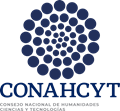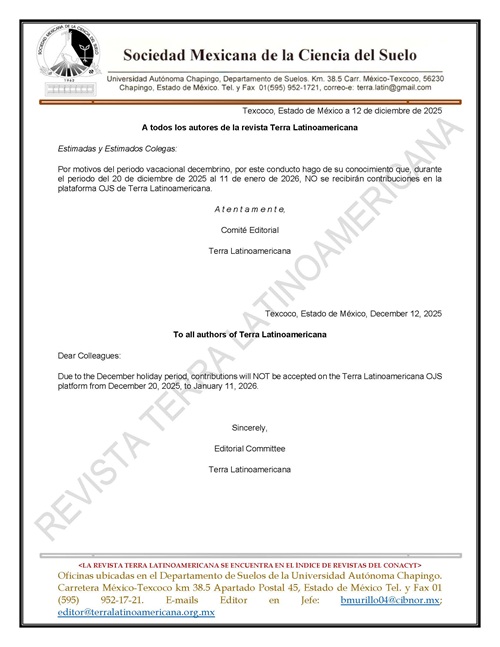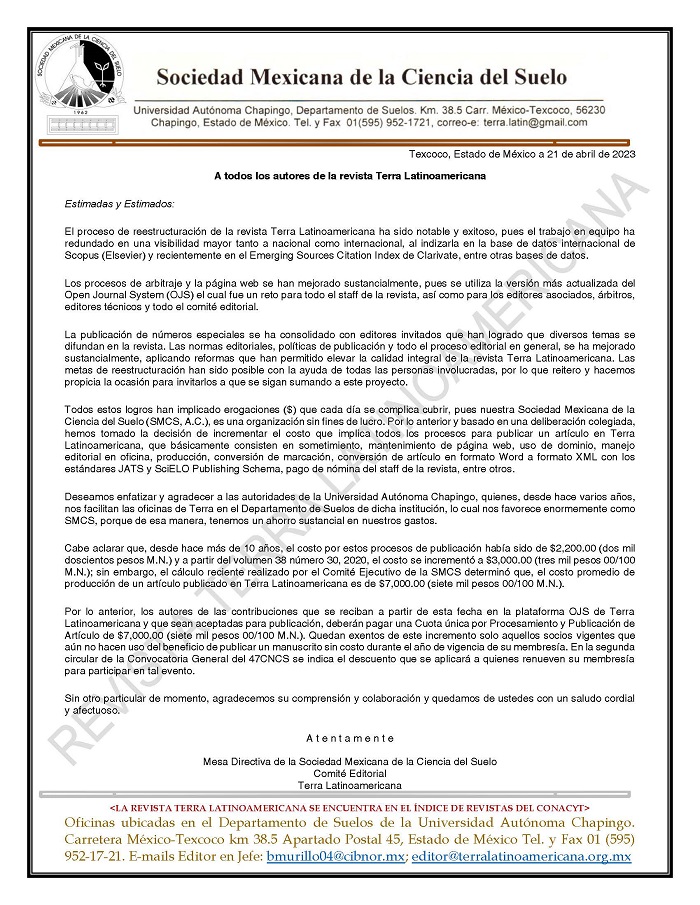Plant communities in soil of semiarid ecosystem and their relationship with mycorrhizal fungi.
DOI:
https://doi.org/10.28940/terra.v36i4.401Keywords:
arbuscular mycorrhiza, rhizosphere, desert scrubsAbstract
The microphilous and xerophilous plant communities in northern Chihuahua develop under environmental stress. Resistance to this stress may be related to the presence of vesicular arbuscular mycorrhizal fungi (HMVA). The objective of this study was to relate the type of soil and the presence of HMVA in the rhizosphere of desert scrubs, as a possible response to the resistance of plants under extreme environmental conditions, in the plant community of ANP Medanos de Samalayuca, Juárez, Chihuahua. During the months of March to October 2016, two directed samplings were carried out, selecting four sampling points based on the type of plant community registered in the f ield. At each sampling point, transects of 100 m were launched, generating ten 20 × 25 m2 plots in each zone. For each plot, the number of individuals per plant species was registered. The Shannon, Simpson, Pielou and Morisita indexes were used. A total of 500 g subsamples of soil was taken at a depth of 0 to 30 cm at each sampling site. Each sample was processed and subjected to physical and chemical analyses such as pH, texture, electrical conductivity, moisture percentage, inorganic nitrogen and extractable phosphorus. Spores were extracted and counted by wet sieving, decantation and centrifugation in 70% sucrose solution. Three types of plant community were determined: matorral inerme parvifolio, matorral mediano subinerme and matorral de medanos. In general, the most common and dominant species was Larrea tridentata. The soils were sandy, alkaline, low soil salinity, low in inorganic nitrogen and high in extractable phosphorus. The HMVA genera found were Gigaspora, Acaulospora, Glomus and Paraglomus. The Pearson correlation analysis indicated that there is no statistically significant relationship between the amount of inorganic nitrogen and the density of HMVA spores (r = 0.585). Regarding phosphorus, a meaningful relationship was found between its concentration and spore density (r = 0.987). The relationship between the number of spores and nutrient concentrations shows that the poorer in nutrients the smaller number of spores; however, resistance of the plants cannot be directly determined by the presence of the HMVA.Downloads
Publication Facts
Reviewer profiles N/A
Author statements
- Academic society
- Terra Latinoamericana
- Publisher
- Mexican Society of Soil Science, C.A.

















